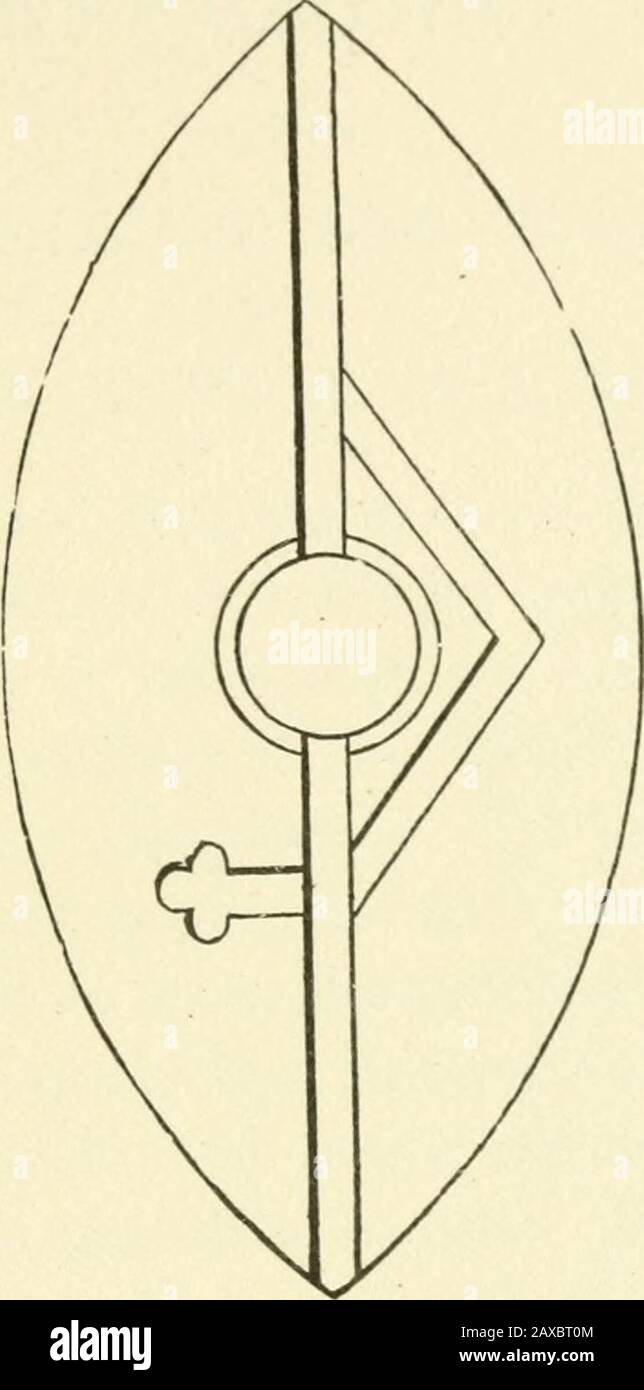Ancient pagan and modern Christian symbolism . a copy of the chemise ordinarily worn by women as an undergarment. Figure 172 represents the chasuble worn by papal hier-archs. It is copied from Pugins Glossaryy etc. Its form isthat of the vesica piscis, one of the most common emblemsof the yoni. It is adorned by the triad. When worn bythe priest, he forms the male element, and with the vhasublecompletes the sacred four. When worshipping the ancientgoddesses, whom Mary has displaced, the officiating ministersclothed themselves iu feminine attire. Hence the use of thechemise, etc. Even the tonsur

Image details
Contributor:
The Reading Room / Alamy Stock PhotoImage ID:
2AXBT0MFile size:
7.1 MB (136.9 KB Compressed download)Releases:
Model - no | Property - noDo I need a release?Dimensions:
1113 x 2245 px | 18.8 x 38 cm | 7.4 x 15 inches | 150dpiMore information:
This image is a public domain image, which means either that copyright has expired in the image or the copyright holder has waived their copyright. Alamy charges you a fee for access to the high resolution copy of the image.
This image could have imperfections as it’s either historical or reportage.
Ancient pagan and modern Christian symbolism . a copy of the chemise ordinarily worn by women as an undergarment. Figure 172 represents the chasuble worn by papal hier-archs. It is copied from Pugins Glossaryy etc. Its form isthat of the vesica piscis, one of the most common emblemsof the yoni. It is adorned by the triad. When worn bythe priest, he forms the male element, and with the vhasublecompletes the sacred four. When worshipping the ancientgoddesses, whom Mary has displaced, the officiating ministersclothed themselves iu feminine attire. Hence the use of thechemise, etc. Even the tonsured head, adopted ^om thepriests of the Egyptian Isis, represents * V anneau; . o thaton head, shoulders, breast and body, we may see on ChriL^anpriests the ilics of the worship of Venas, and the adorationof woman 1 .ow horrible all this would sound if, instead ofusing veiled language, we had employed vulgar words. The 105 idea of a man adorning himself, when ministering before Godand the people, with the effigies of those parts which nature. Figure 172. as well as civilisation teaches uo j conceal, would be simplydisgusting, but when all is said to be mysterious and con-nected with hidden signification, almost everybody toleratesand many eulogise or admire it ? 107 APPENDIX. THE ASSYRIAN *GROVE AND OTHER EMBLEMS, BY JOHN NEWTON, M. R. C. S. The study of sacred symbols is as yet in its infancy. Ithas hitherto been almost ignored by sacerdotal historians;and thus a rich mine of knowledge on the most interestingof all subjects —the history of the Religious Idea in man —remains comparatively unexplored. The topic has a two-foldinterest, for it equally applies to the present and the past.As nothing on earth is more conservative than religion, wehave still a world of symbolism existing amongst us which isfar older than our sects and books, our creeds and articles, a relic of a forgotten, pre-historic past. Untold ages beforewriting was invented, it is believed that men attemptedto